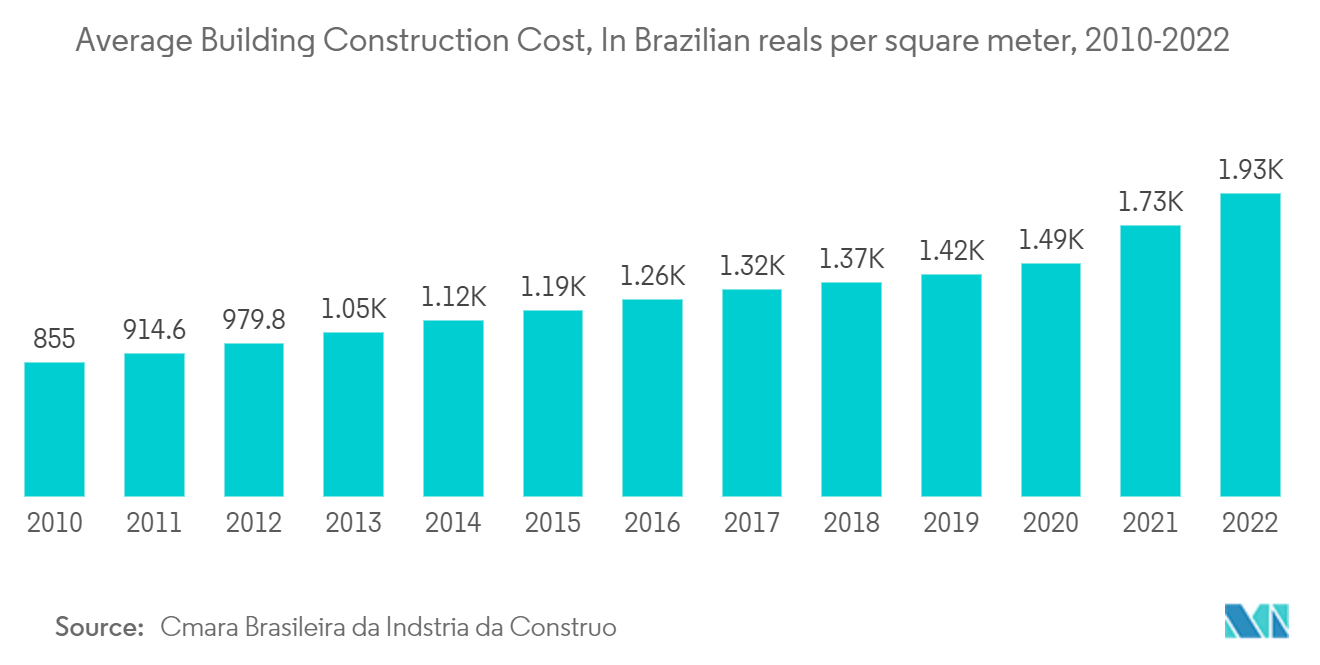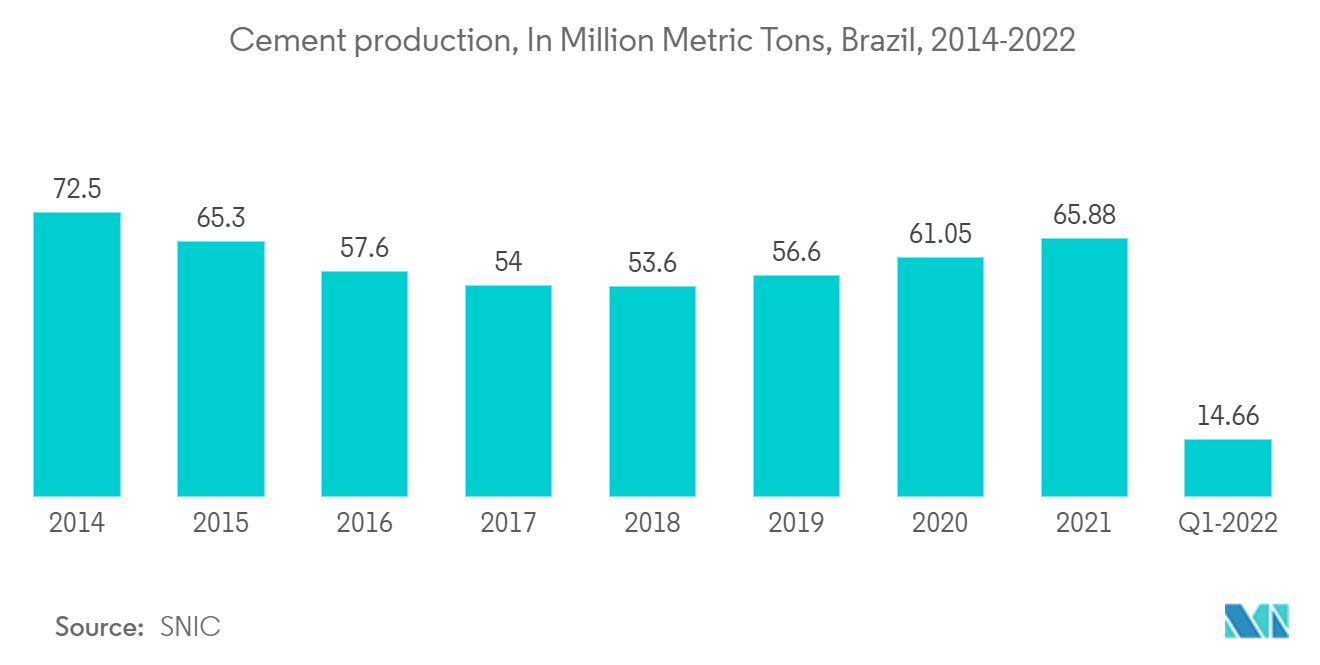Market Trends of Brazil Prefabricated Buildings Industry
Opportunities in Residential & Infrastructure Sectors to Boost the Prefabricated market
Bearing in mind the low/medium income brackets that buy properties via government incentive programs for home ownership, such as Casa Verde Amarela (CVA) and Sistema Brasileiro de Poupança e Empréstimo (SBPE), the housing deficit in Brazil remains very large - reaching 6 million units in 2021.
The total housing stock in the country was only 204,000 units, and sales until that period totaled 188,000 units. It was an increase of 23% per year, despite the high levels of unemployment, which is around 12% nowadays, but in a downward trend, impacting the household budgets. The city's extreme housing deficiency especially influences helpless occupants. As recent information indicates, at least 13,706 of its poorest family units (those earning less than times a monthly wage of USD 250) live in ghettos or vagrant settlements. Another 53,214 share lodging with different families and 22,297 family units live in overcrowded conditions.
Another important urban infrastructure area is the construction of schools. Schools require diverse and complex programs and flows. Therefore, developing an educational project is one of the greatest challenges for architects. Due to the economy, rationalization, and work speed, Brazil's largest portion of school projects are designed from prefabricated concrete elements with rigid modulations and, in rare cases, steel. Brazil's most recent school building constructions are prefabricated, FDE - Golden Park School V / Apiacás Arquitetos, FDE Public School / FGMF, and Campinas School / bvy Arquitectos, to name a few.
Not to mention the potential demand in the infrastructure sector, with several promises of construction developments in sanitation, irrigation, and infrastructure auctions coming to fruition. It will positively impact the results of the prefabricated industry in the construction sector.

Precast Concrete Market Hold Major Share in the Prefab Buildings Market
According to an industry association, cement consumption will likely decline in the second half of 2023 due to a worsening general economic outlook. However, order books for the construction industry were ‘strong’ for at least the first six months of 2023, which would cushion the sector.
Precast concrete is one of the main contributing factors to the increase in the production and sales of cement. As the prefab market and modular construction activity increase, the need for cement also rises as there will be an immediate requirement.
The downturn is expected to be short-lived as interest rates ease slightly and stronger infrastructure volumes materialize next year and beyond. The main driver of the cement consumption recovery was the real estate sector, especially the residential one, according to SNIC. The number of units financed for construction grew by 38% until November. Similarly, a 17% increase in residential launches accumulated up to September, emphasizing properties aimed at the middle and upper classes.


